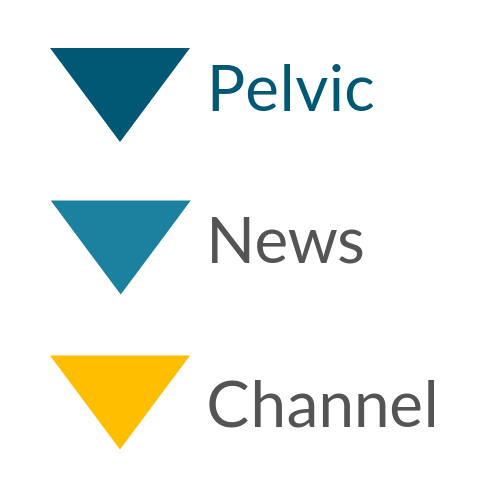Recently, I discussed very interesting research which showed that continent men post-prostatectomy had an equal or even better pelvic floor function than healthy continent men. The question that rises with this knowledge is; are our training programs adequate to reach this level of an even better pelvic floor muscle function?
A randomized controlled trial in which the effect of two training protocols on urinary incontinence post-prostatectomy are compared shows that an intensive training program started pre-surgery had a positive effect on post-prostatectomy incontinence.
Method
Inclusion criteria:
- preoperative radical prostatectomy
- open or robotic assisted approach
- age > 18 years
- continent
Exclusion criteria:
- acute illness
- current smokers
- diabetes; type 1 or 2
- alcohol consumption > 21 units/week
- impaired mental status
- prior prostate surgery
- undergoing or prior radiation therapy
- undergoing or prior androgen deprivation therapy (anti-hormone therapy)
Patients with all types of surgical approach were included.
Treatment protocol
Five weeks before the prostatectomy, participants were randomly allocated to either the ‘usual care’ or the ‘high intensity pelvic floor muscle training’ group (table 1). The treatment was given in one physiotherapy clinic.
Table 1: Pelvic Floor Muscle Training Program
| PELVIC FLOOR MUSCLE EXERCISES | USUAL CARE GROUP (current practice) | INTERVENTION GROUP (high intensity training) |
|---|---|---|
| Number of sets per day | - 3 | - 6 |
| Number of contractions | - 10 | - 10 fast - 10 slow |
| Total number of contractions per day | - 30 | - 60 fast - 60 slow - 120 in total |
| Duration of contraction and rest | - 10 seconds contraction with 10 seconds rest | - fast: 1 second - slow: 10 seconds - equal rest time between contractions |
| Position | - supine, sitting, standing | - standing |
Both groups got advice on:
- Bladder training (at least 2 hours between voids if possible)
- Caffeine intake max 1 serve/day
- Avoid alcohol consumption until continent
- Encouraged to walk 30 minutes, 5 days per week
In the first session five weeks pre-prostatectomy all patients got instruction on how to contract the pelvic floor muscles in writing and verbally. The contraction of the pelvic floor muscles was checked with ultrasound. Use of abdominal muscles and proper use of the breath was also instructed and checked with real time ultrasound (RTUS). In total they got two sessions of pelvic physiotherapy.
Post-operative, the men started training after removal of the catheter. The training protocols remained the same for a 12 week period.
Outcome measures:
Measured at 2, 6 and 12 weeks post-prostatectomy.
Primary outcome:
Incontinence: 24 hours bladder diary including pad weight
Secondary outcome:
QoL: International Prostate Symptom Score (IPSS), expanded Prostate Cancer Index Composite for Clinical Practice (EPIC-CP/impact on QoL)
RTUS on pelvic floor muscle function
Results
In total, 97 men (with a mean age of 63 and BMI of 25.40, Gleason 7) completed the study. In the usual care group were 47 and in the intervention group 50 men. Table 2 shows that the men in the intensive training program were significantly more dry compared to the usual care training program.
Table 2: reported dry
| Post-prostatectomy | Usual care group (%) | Intervention group (%) |
|---|---|---|
| 2 weeks | 4 | 14 |
| 6 weeks | 11 | 32 |
| 12 weeks | 43 | 74 |
The pad weight of the intervention group also showed a significant improvement compared to usual care.
The IPPS scores showed a significant difference at 6 and 12 weeks in favour of the intervention group. The EPIC-CP, the intervention group scored significantly better at 2 weeks. However, at 6 and 12 weeks there was no difference between groups.
RTUS outcome intervention group post-prostatectomy (significant) at all time points:
- faster repeated muscle contraction
- longer sustained contraction
My opinion
This is really interesting research as it compares different treatment protocols. The research of Stafford, discussed in a previous blog, showed that continent men post-prostatectomy had a pelvic floor muscle function which was at least as good or maybe even better as healthy controls. The research of today is the first of its kind that shows that a more intensive training protocol targeting slow- and fast twitch fibres has a significantly better outcome than the protocol which is used in general.
The Cochrane systematic review on conservative management (pelvic floor muscle training) for men with urinary incontinence after prostate surgery is not conclusive on the effect of conservative treatment pre- and or post-operative. Guidelines are often based on systematic reviews or multiple comparable studies. Therefor more well designed randomized controlled trials regarding the effect of intensive training programs on urinary incontinence post-prostatectomy are needed!
There are some things regarding the protocol of this study I have some thoughts about:
This research has a follow up of three months and we know that at one year post-prostatectomy there is no significant difference between men who do pelvic floor muscle training and those who don’t. I wonder what the results of intensive pelvic floor muscle training are at one year post-prostatectomy. Is there still a significant difference between groups? It would also be very interested to know if intensive training has a significant better outcome than no intervention.
The intensive training protocol remains the same over time and if we consider the principle of overload this is a debatable choice. It will be interesting to see if a protocol with overload will result in an even better outcome.
In this protocol the men start the supervised (two sessions) training pre-prostatectomy. They learn how to conduct a proper pelvic floor contraction, not hold the breath during contraction and, not to contract the abdominal muscles. The men didn’t get any therapy session post-prostatectomy. However, men who loose urine might start holding their breath and contract the abdominal muscles. Why not check post-prostatectomy if they are still performing the exercises in the right way? And start functional training to ensure that the pelvic muscles contract at the right time during activity (coordination).
Conclusion
An intensive pelvic floor muscle training program started pre-prostatectomy has a positive effect on post-prostatectomy incontinence.
Reference:
Milios JE, Ackland TR, Green DJ. Pelvic floor muscle training in radical prostatectomy: a randomized controlled trial of the impacts on pelvic floor muscle function and urinary incontinence. BMC Urol. 2019 Nov 15;19(1):116. doi: 10.1186/s12894-019-0546-5. (open access)









Recent Comments